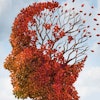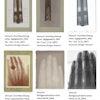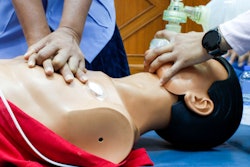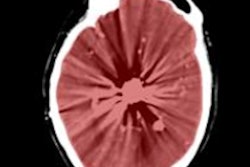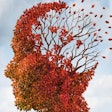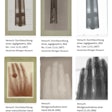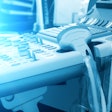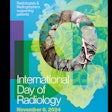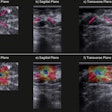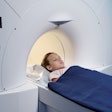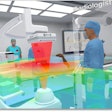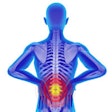
Will the radiographer profession die out by 2025? That's certainly one possibility, according to new analysis from Sweden. But facilitating career development opportunities for radiographers could help to turn the tide, the authors predict.
The researchers conducted several focus group interviews to determine possible future outcomes for radiography in Sweden by 2025. The most likely scenarios are the "happy radiographer," the "specialist radiographer," the "dying profession," and the "assembly line," concluded a team led by Berit Björkman, PhD, a senior radiography lecturer at Jönköping University's department of natural science and biomedicine in Jönköping (Radiography, 10 August 2017).
"Appropriate actions and timely decision-making can probably change the direction of the radiography profession within the Swedish context in a positive way," they wrote. "It is suggested that 'the dying profession' scenario could probably be turned in the opposite direction by facilitating career development opportunities for radiographers within the profession."
In Sweden, the future availability of radiographers is not positive due to increased retirement and a smaller number of young people entering higher education. What must radiographers do to survive? It's a hard question to answer, but one method is to discern possible future outcomes and plan for them, according to the researchers.
"Good planning requires a vision of the future," they wrote. "Planning implies studying what might happen in the future to ensure that companies and organizations take the right actions in order to be successful."
A successful tool to that end is the so-called scenario-planning method, because it can consider multiple strategy options and take several perspectives into account. This method can also provide a deeper understanding of the inherent variability of any company, organization, or profession. The process involves visualizing the future in terms of the following questions: What future conditions or events are plausible? What would be likely scenarios when unlikely trends occur? How can one respond to or benefit from these trends?
Björkman and colleagues built on previous research to construct four possible future scenarios and then conducted 11 focus group interviews. The groups ranged in size from four to five radiographers. In total, 48 radiographers working in 11 different radiology departments throughout Sweden participated. The focus groups determined the two most uncertain scenarios that would have the greatest effect on the profession were access to career advancement and a sufficient number of radiographers.
The 2 most optimistic scenarios
The happy radiographer is a scenario with a sufficient number of radiographers and good access to career advancement. It is the most desirable scenario -- a "veritable fairy tale in which daily work is varied, an aspect considered a great source of job and career satisfaction," the authors wrote. It requires the radiographer to be skilled in performing exams based on technical knowledge with high quality and to assume greater responsibility for patient care.
For this scenario to move out of the realm of fairy tale and into reality, radiographers need continuous education within the profession. Sensitive managers also are a must -- people who possess the necessary knowledge and skills to lead in a progressive manner and develop the organization. They have research skills, academic competence, and an interest in research and development.
In the specialist radiographer scenario, radiographers have access to career advancement but a shortage of radiographers exists.
"Radiographers currently work in a highly technological environment where they operate advanced equipment and encounter increasingly complex challenges related to patient needs," the authors wrote. "This combination leads to radiographers working in interprofessional teams in order to meet the patient's needs in a person-centered way."
In this scenario, radiographers need confidence in their expertise, in-depth knowledge, and specialized skills such as clinical reporting to safeguard their position on the team -- especially to ensure other professions don't become competitors.
As with the happy radiographer scenario, this requires professional development. However, unlike the happy radiographer scenario, it puts more of the onus on the individual to take initiative, for instance by studying in their leisure time.
The 2 most pessimistic scenarios
In the assembly line scenario, a sufficient number of radiographers exist, but they do not advance in their careers. However, many diagnostic radiology departments are faced with a shortage of radiographers, making this scenario unlikely.
If it did take place, no other professions would compete with radiographers, and radiographers would cover all aspects and modalities within clinical practice to a maximum degree. Work is like an assembly line with little or no opportunity for career advancement, as the top priority in clinics is to produce exams, similar to manufacturing goods in a factory. The patient also suffers, because they are no longer seen as a person.
In the dying profession scenario, radiographers are in short supply, and no career development exists -- there is no specialization, and human and technical resources will not be used in an optimum way -- and the profession stagnates before gradually disappearing.
For Sweden, in particular, a possibility is that radiographers could become specialist technicians, performing the technical part of exams while working closely with nurses who provide the patient care. Also in this scenario, because no advanced level education will be available, the basic level will be negatively affected as well, damaging the profession and reducing professional pride, according to the researchers.
"The radiographers considered this an alarming but possible scenario for the profession," Björkman and colleagues wrote. This would occur primarily if no action is taken to prevent it from happening. "Their concern was partly due to the fact that other professions with no radiation protection training would carry out examinations and care for patients in this highly technological environment without possessing adequate knowledge to ensure patient safety."
To stay on the optimistic side of the scenarios, managers need to focus on and implement satisfactory opportunities for career development, the researchers concluded. This means more advanced knowledge and skills to encounter and take greater responsibility for patients with increasingly complex medical histories.
"In light of the development of healthcare, the future of the traditional radiographer is tenuous, while that of the advanced radiographer is bright," the authors wrote. "The merger of these two roles into that of a specialist radiographer is significant for the radiography profession, for patients, and for the entire healthcare system."
